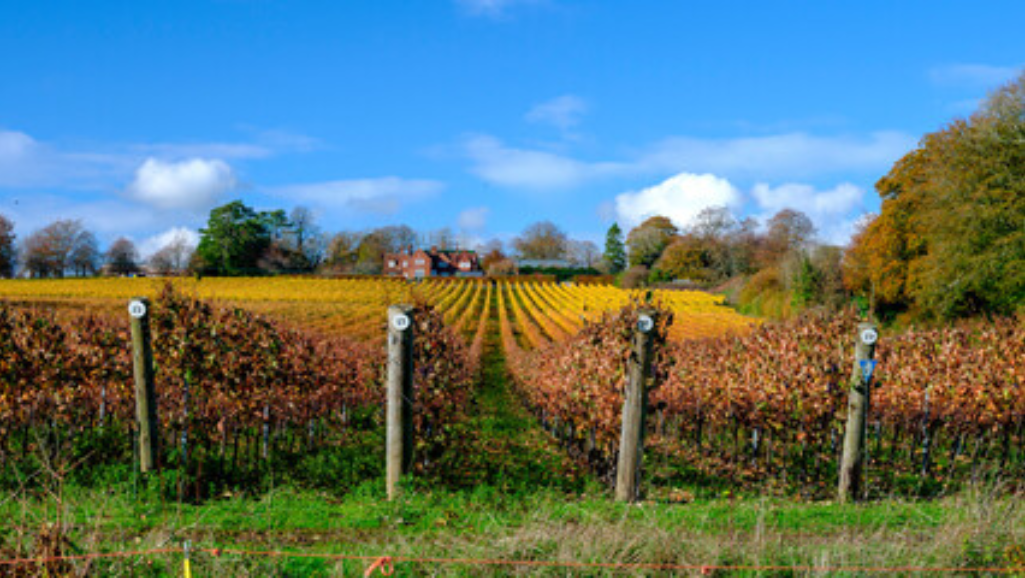Discover how you can protect your grape vineyards from diseases before they harm your precious grapes. By planting indicator plants around your vineyards, you can detect potential diseases early on, ensuring the health and productivity of your grape crops. Learn about the role of companion plants and the benefits of specific species in preventing disease spread. Implementing companion planting in your vineyards is a best practice that will help you maintain a thriving grape vineyard.
Contents
Indicator Plants for Disease Detection
You can use specific indicator plants around grape vineyards to detect diseases before they affect the grapes. Companion planting techniques and disease prevention strategies play a crucial role in maintaining the health of grapevines. Indicator plants are species that are highly susceptible to certain diseases, making them excellent early warning systems. By monitoring these indicator plants, you can detect the presence of diseases and take appropriate measures to prevent their spread to the grapevines.
One example of an indicator plant is the rosebush. Roses are highly susceptible to a variety of fungal diseases, including powdery mildew and black spot. By planting rosebushes near your grapevines, you can easily spot the early signs of these diseases. If you notice any symptoms on the rosebushes, such as white powdery patches or black spots on the leaves, it is a clear indication that the diseases are present in the vicinity. This allows you to implement preventive measures such as applying fungicides or adjusting cultural practices to minimize the risk of the diseases spreading to the grapes.
Indicator plants provide an additional layer of protection for your grapevines, allowing you to detect diseases early and take proactive steps to prevent their impact on the grape yield. By incorporating companion planting techniques and disease prevention strategies, you can ensure the long-term health and productivity of your grape vineyard.
Role of Companion Plants in Grape Vineyards
Companion plants play a vital role in grape vineyards by providing additional benefits and protection against diseases. Intercropping, the practice of growing different types of plants together, offers several advantages for grape vines. Here are five reasons why companion plants are beneficial in grape vineyards:
- Enhanced biodiversity: Intercropping increases the diversity of plant species in the vineyard, creating a more balanced ecosystem. This promotes the presence of beneficial insects and pollinators, which help control pests and improve grape production.
- Improved soil health: Companion plants have the ability to fix nitrogen and improve soil structure. This leads to increased nutrient availability for grape vines and enhances their overall health and productivity.
- Natural pest control: Some companion plants act as natural repellents, deterring pests that could harm the grape vines. This reduces the need for chemical pesticides, resulting in a healthier and more environmentally friendly vineyard.
- Weed suppression: Certain companion plants have allelopathic properties, which inhibit the growth of weeds. This reduces competition for resources and ensures that grape vines receive the necessary nutrients and water.
- Microclimate regulation: Companion plants can create a microclimate around the grape vines, providing shade and protection from extreme weather conditions. This helps maintain optimal growing conditions and minimizes stress on the vines.
Benefits of Planting Specific Species Around Vineyards
When planting specific species around grape vineyards, the incorporation of these plants contributes to the early detection of diseases before they can impact the grapes. However, the benefits of planting specific species around vineyards extend beyond disease detection. One of the key advantages is the promotion of biodiversity. By introducing a variety of plants, you create a diverse ecosystem that attracts different organisms, including beneficial insects and birds. This biodiversity helps maintain a balance in the vineyard, preventing the dominance of harmful pests and reducing the need for chemical pesticides.
Moreover, planting specific species around vineyards also encourages natural pest control. Certain plants, such as lavender, marigold, and fennel, have natural repellent properties that deter pests like aphids and nematodes. Additionally, some plants can act as trap crops, luring pests away from the grapevines and protecting the valuable fruit.
To better illustrate the benefits of planting specific species around vineyards, here is a table showcasing some examples of plants and their contributions:
| Plant | Benefit |
|---|---|
| Lavender | Repels aphids |
| Marigold | Deters nematodes |
| Fennel | Acts as a trap crop for insects |
How Indicator Plants Help Prevent Disease Spread
Planting specific species around vineyards not only promotes biodiversity and natural pest control, but it also plays a crucial role in preventing the spread of diseases. Indicator plants, in particular, offer numerous benefits for grape disease prevention. Here are five reasons why indicator plants are essential in maintaining the health of vineyards:
- Early detection: Indicator plants are highly sensitive to diseases, acting as an early warning system. Their presence enables growers to identify and address potential issues before they affect the grapevines.
- Disease monitoring: By observing the health of indicator plants, grape growers can monitor the presence and progression of diseases in the vineyard. This allows for targeted treatments and preventive measures to be implemented promptly.
- Reduced disease spread: Indicator plants serve as a barrier, preventing the spread of diseases from one area to another within the vineyard. Their strategic placement helps contain potential outbreaks and minimize the risk of grapevine infection.
- Improved disease management: Monitoring indicator plants provides valuable insights into disease patterns and prevalence. This knowledge allows growers to develop effective disease management strategies, minimizing the impact on grape production.
- Sustainable practices: Incorporating indicator plants into vineyard management promotes a sustainable approach to disease prevention. By relying on natural indicators, growers can reduce reliance on chemical treatments, resulting in healthier grapes and a more environmentally friendly operation.
Best Practices for Implementing Companion Planting in Vineyards
To effectively implement companion planting in vineyards, you can start by selecting appropriate plant species that complement grape vines. By choosing plants that have beneficial relationships with grapevines, you can enhance pest management techniques and improve soil health.
Companion planting involves strategically planting certain species alongside grapevines to provide a range of benefits. For example, planting flowers such as marigolds can help deter pests like aphids and nematodes, reducing the need for chemical pesticides. Additionally, legumes like clover can fix nitrogen in the soil, improving its fertility and reducing the need for synthetic fertilizers.
Here is a table highlighting some common companion plants and their benefits:
| Plant | Benefits |
|---|---|
| Marigold | Deters aphids and nematodes |
| Clover | Improves soil fertility |
| Nasturtium | Attracts beneficial insects |
Implementing companion planting in vineyards requires careful planning and consideration of plant compatibility, as well as the specific needs of grapevines. It is important to choose plants that will not compete with grapevines for resources or attract pests that could harm the vines.




